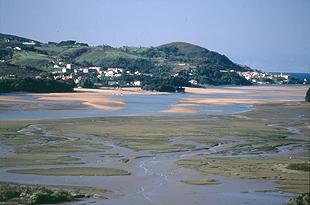Transitional waters

Transitional waters are those waters between the land and the sea and include fjords, estuaries, lagoons, deltas and rias. They often encompass river mouths and so show the transition from freshwater to marine conditions. Depending on the tidal influence from coastal waters, but also on the freshwater influence from upstream, transitional waters are often characterised by frequently changing salinity.
These hydrographic features often relate to tides and freshwater and marine conditions which make transitional waters highly dynamic and create a particular and characteristic flora and fauna.
Worldwide, transitional waters are the sites of major cities and ports, for example in Europe this includes London, Hamburg, Antwerp, Rotterdam, Nantes, Lisbon and Bilbao. Because of this these waters historically have been degraded by port activities, by pollution from urban, industrial and agricultural areas, and by land claim for sea defences, building and agriculture.